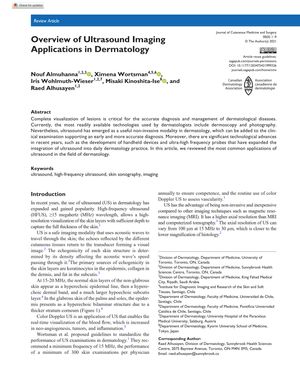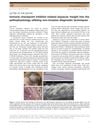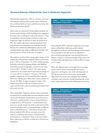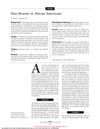Overview of Ultrasound Imaging Applications in Dermatology
March 2021
in “
Journal of Cutaneous Medicine and Surgery
”

TLDR Ultrasound is a useful, non-invasive tool in dermatology for diagnosing skin conditions and guiding treatments, but it has some limitations.
High-frequency ultrasound (HFUS) is a non-invasive, cost-effective imaging technique with high axial resolution, useful in dermatology for diagnosing and managing various skin conditions. HFUS, operating at frequencies of ≥15 MHz, allows for detailed visualization of skin layers and is effective for evaluating benign and malignant tumors, nail pathology, inflammatory dermatoses, and guiding aesthetic procedures. Color Doppler ultrasound extends its utility by visualizing blood flow, which is helpful in assessing tumors and inflammation. The review suggests standardized protocols for ultrasound use in dermatology, including a minimum frequency of 15 MHz and at least 300 skin examinations per physician annually to maintain proficiency. Ultrasound has limitations, such as not detecting very small lesions. It is especially beneficial for pediatric patients, reducing the need for skin biopsies. In hidradenitis suppurativa (HS) patients, ultrasound changed management in 82% of cases and is also highly sensitive and specific in identifying active morphea. Ultrasound can reduce the need for biopsies, particularly in pediatric, nail, and hair disorders.





